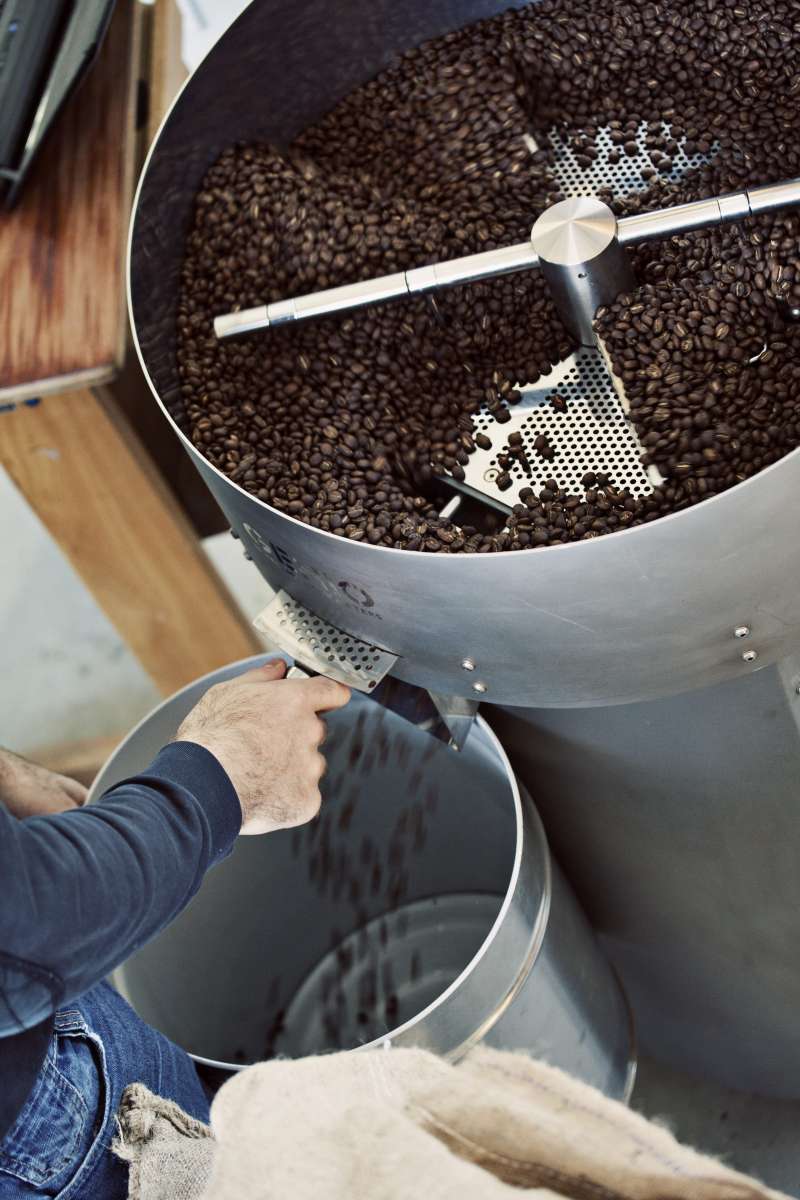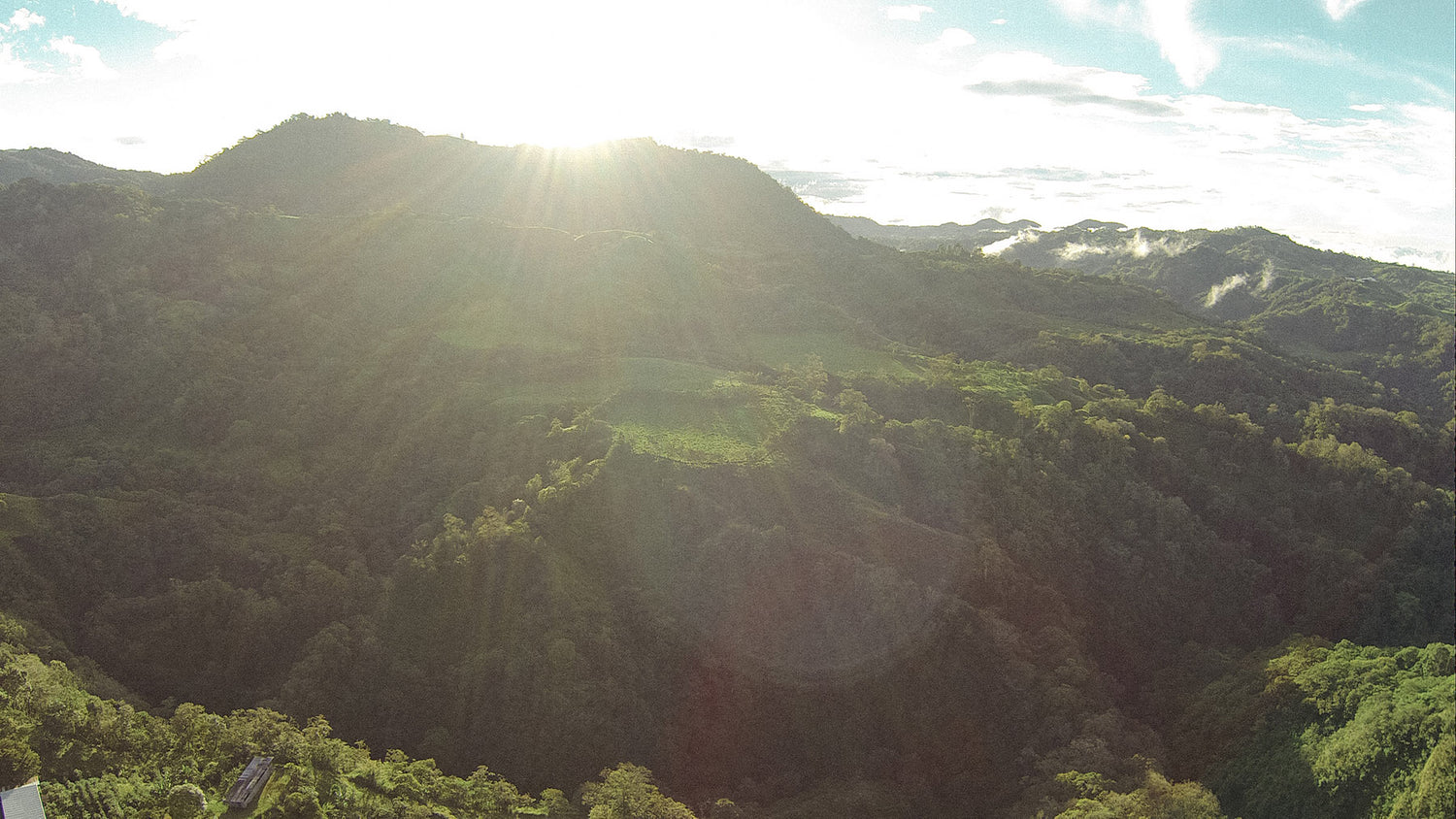You can't get enough of our coffee and have always wanted to know what makes it taste so good? The way in which the coffee is roasted plays a big role, of course. Coffee roasting is very complex and involves many steps, all of which have their own significance for the result. Every green coffee behaves differently - a coffee from Colombia reacts differently when roasted than one from Ethiopia or Kenya. If a coffee is grown taller, it has a higher density and must be roasted differently than a coffee that is grown shorter. The way the coffee is processed in the country of origin is also crucial for the coffee roasting. Washed, natural or honey make a difference.
Once we have developed a suitable roasting profile - a recipe, so to speak - for coffee roasting, taking these and other variables into account, which best brings out the characteristic flavor nuances and tastes excellent, we want to be able to produce this profile consistently again and again.
We will now explain to you how we achieve this:

Coffee roasting - support from Cropster!
There are very useful software solutions available today to keep coffee roasting consistent. These make the roasting process visible and understandable on the screen based on data measured at various points on the roaster. The samples required for the data measure, for example, the starting temperature in the roasting drum at which the beans are put into the roaster, the temperature of the beans themselves, the speed at which the beans absorb temperature or the temperature of the exhaust air.
To visualize all of this data, we use the roasting software Cropster . Using a roasting curve that shows all of the above components, we can control the roaster manually. This guarantees that the new roasting will be the same as the desired model.

Coffee roasting - The starting temperature must be adjusted
The starting temperature at which the beans are placed in the drum must be adjusted accordingly depending on the coffee. If you start with too low a temperature, the coffee roasting slows down and leads to an underdeveloped coffee because the complex, exciting aromas cannot develop. Grassy, green or hay-like notes arise. If you start with too high a starting temperature, there is a risk of burning the beans, which will result in burnt, smoky, sharp notes.
For us, this means that we heat the roaster to the same temperature as when we first started, so that we reach the same starting temperature at which the beans are put into the roaster. During the course of the coffee roasting process, we have to control or reduce the gas supply to the roaster at certain points so that the bean temperature can develop according to the curve. Finally, we let the beans out of the roaster into the cooling sieve at the same final temperature.
Coffee roasting – physics and chemistry?
There is a lot of chemistry and physics involved in roasting. In short, this includes: browning, expansion and dehydration of the beans. In addition, high pressure builds up inside the beans, they almost double their volume and lose weight. The simultaneous weight loss and expansion lead to their density being halved. When roasted, the beans still have around 1-2% moisture. Many of the chemical compounds in green coffee are still present in roasted coffee, but many new components are also created during the coffee roasting process.
Other chemical changes that occur during coffee roasting are the decomposition of chlorogenic acid, the destruction of almost all free sucrose, the formation of long-chain sugar molecules, the breaking down of polysaccharides into simple sugars, the reaction of sugars and amino acids that produce the typical roasted aromas, caramelization and, in dark roasts, the carbonization of organic substances.
The amount of caffeine in green coffee is reduced minimally during the coffee roasting process. However, due to the high weight loss during coffee roasting, the roasted beans contain proportionally more caffeine after roasting. Since the beans lose more weight the longer the coffee is roasted, dark roasted coffee contains proportionally more caffeine than light roasted coffee.

What phases do the beans go through during coffee roasting?
During coffee roasting, the beans go through different phases, which also become visible with Cropster.
At the beginning of the coffee roasting process, the green beans lose most of their remaining moisture. Therefore, the first phase of coffee roasting is called the drying phase. If the beans turn yellow during the coffee roasting process, the Maillard phase begins. In this phase, carbohydrates and amino acids react with each other. Sugar molecules begin to caramelize and melanoidins are formed, which brown the beans. These processes contribute significantly to the taste and body of the roasted coffee.
As the heat builds up in the beans, a lot of steam and carbon dioxide are created, which puts the beans under so much pressure that they eventually break open in the so-called first crack. If the coffee roasting takes place too quickly up to the first crack and is then stopped too quickly, undesirable, slightly herbal notes arise and the coffee has an unpleasant acidity.
The phase from the first crack onwards is called the development phase, as complex flavours are now developing that reveal the taste characteristic of the country of origin. In order to preserve this, we stop roasting the coffee shortly after the first crack. Depending on the country of origin, the coffee will still have a relatively high acidity and many fruity notes. However, sweet, berry notes can also emerge from other countries of origin. If you roast for longer, i.e. let the beans get darker, more and more chocolatey, roasted, dark notes will develop.
Coffee roasting - the preparation is also crucial!
The processing method is also crucial here. With naturally processed beans, they are not separated from the coffee cherry, but are dried as a whole in the cherry and thus in a dark, moist environment, which breaks down the bean cells during fermentation before roasting. The beans are only separated from the shell after a certain drying time. Due to the long contact with the pulp, the beans are significantly sweeter at the end. To maintain this, they must be roasted more slowly and at a lower temperature so that the sugar molecules do not burn. A washed coffee, on the other hand, should be roasted a little faster in order to maintain the acidity that is characteristic of this type of processing.
In the end, we hope we've gotten the best out of the beans and you'll enjoy the coffee as much as we do. In our online shop, you'll find selected coffees as well as the right accessories for making coffee . Discover now!
Other interesting articles:
The first coffee roastery from Garmisch-Partenkirchen


